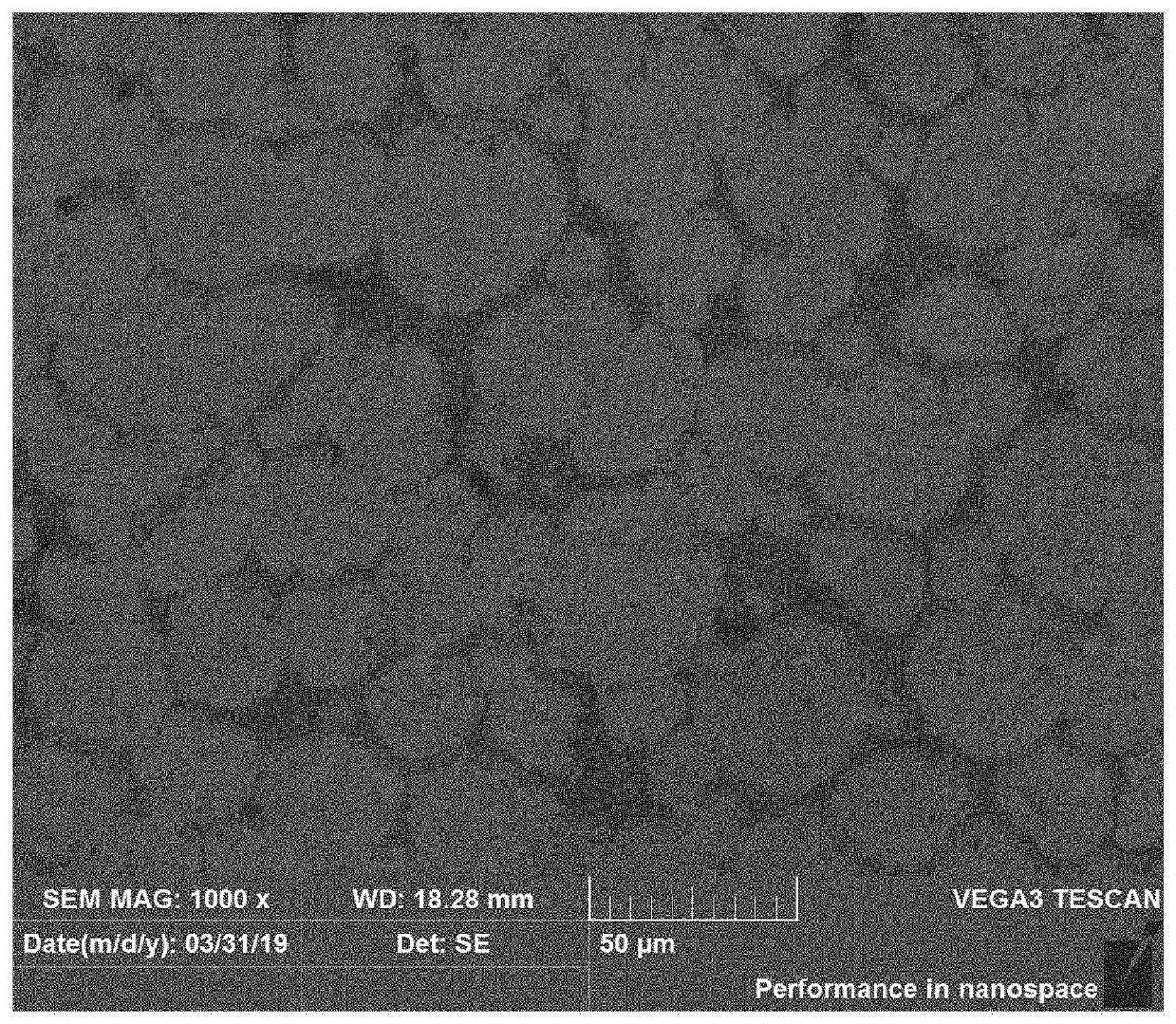Tungsten-base alloy material and preparation method therefor
a technology of tungsten-base alloy and tungsten-base alloy, which is applied in the field of preparation of tungsten-base alloy materials, can solve the problems of difficult to effectively grind zirconium oxide particles, low performance of conventional powder metallurgy liquid-phase sintered tungsten-base alloy, and limited armor penetration performance when used as bullet cores
- Summary
- Abstract
- Description
- Claims
- Application Information
AI Technical Summary
Benefits of technology
Problems solved by technology
Method used
Image
Examples
embodiment 1
[0055]The preparation method for the tungsten-base alloy material of this embodiment includes the following steps.
[0056]1) Preparation of Mixed Powder Consisting of Zirconium Oxide and Tungsten
[0057]125.395 kg of ammonium metatungstate ((NH4)6H2W12O40.xH2O, equivalent to metal W: 93.00 kg) was dissolved in water, and nitric acid was added dropwise to pH 1 to obtain the precursor solution A. Then the precursor solution A was subjected to a hydrothermal reaction at 150° C. The time of the hydrothermal reaction is 15 hours, and the tungsten trioxide suspension is obtained after the hydrothermal reaction is over.
[0058]0.232 kg of zirconium nitrate (equivalent to ZrO2:0.066 kg) was dissolved in water, and then ammonia water was added dropwise to pH 12 to obtain the precursor solution B. Then the precursor solution B was subjected to a hydrothermal reaction at 150° C. The time of the hydrothermal reaction is 15 hours, and the hydrogen zirconium oxide suspension is obtained after the hydro...
embodiment 2
[0069]The preparation method for the tungsten-base alloy material of this embodiment includes the following steps.
[0070]1) Preparation of Mixed Powder Consisting of Zirconium Oxide and Tungsten
[0071]The tungsten trioxide suspension was prepared according to the preparation method for the tungsten trioxide suspension in Embodiment 1.
[0072]0.464 kg of zirconium nitrate (equivalent to ZrO2:0.133 kg) was dissolved in water, and then ammonia was added dropwise to pH 12 to obtain the precursor solution B, and then the precursor solution B was subjected to a hydrothermal reaction at 150° C. The time of hydrothermal reaction was 15 hours. A hydrogen zirconium oxide suspension was obtained after the hydrothermal reaction was over.
[0073]The prepared tungsten trioxide suspension and hydrogen zirconium oxide suspension were uniformly mixed and filtered, and then dried to obtain a dry powder. The dry powder was sintered at 600° C. for 2 hours, and then the sintered product was put into a rod red...
embodiment 3
[0083]The preparation method for the tungsten-base alloy material of this embodiment includes the following steps.
[0084]1) Preparation of Mixed Powder Consisting of Zirconium Oxide and Tungsten
[0085]The tungsten trioxide suspension was prepared according to the preparation method for the tungsten trioxide suspension in Embodiment 1.
[0086]0.697 kg of zirconium nitrate (equivalent to ZrO2:0.200 kg) was dissolved in water, and then ammonia was added dropwise to pH 12 to obtain the precursor solution B, and then the precursor solution B was subjected to a hydrothermal reaction at 150° C. The time of hydrothermal reaction was 15 hours. A hydrogen zirconium oxide suspension was obtained after the hydrothermal reaction was over.
[0087]The prepared tungsten trioxide suspension and hydrogen zirconium oxide suspension were uniformly mixed and filtered, and then dried to obtain a dry powder. The dry powder was sintered at 600° C. for 2 hours, and then the sintered product was put into a rod red...
PUM
| Property | Measurement | Unit |
|---|---|---|
| temperature | aaaaa | aaaaa |
| mass ratio | aaaaa | aaaaa |
| pH | aaaaa | aaaaa |
Abstract
Description
Claims
Application Information
 Login to View More
Login to View More - R&D
- Intellectual Property
- Life Sciences
- Materials
- Tech Scout
- Unparalleled Data Quality
- Higher Quality Content
- 60% Fewer Hallucinations
Browse by: Latest US Patents, China's latest patents, Technical Efficacy Thesaurus, Application Domain, Technology Topic, Popular Technical Reports.
© 2025 PatSnap. All rights reserved.Legal|Privacy policy|Modern Slavery Act Transparency Statement|Sitemap|About US| Contact US: help@patsnap.com

